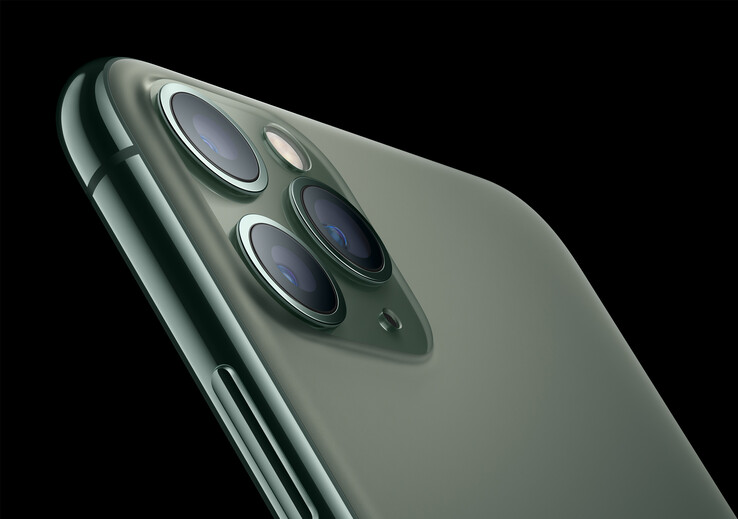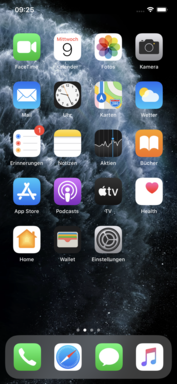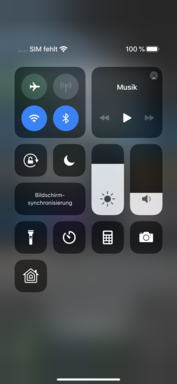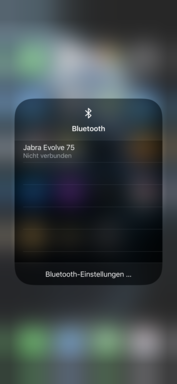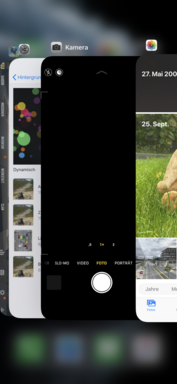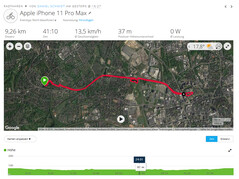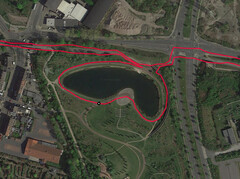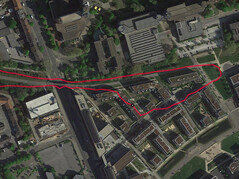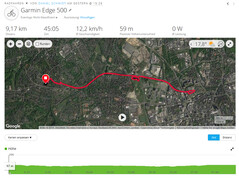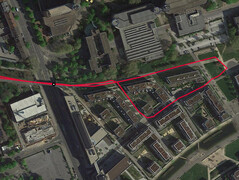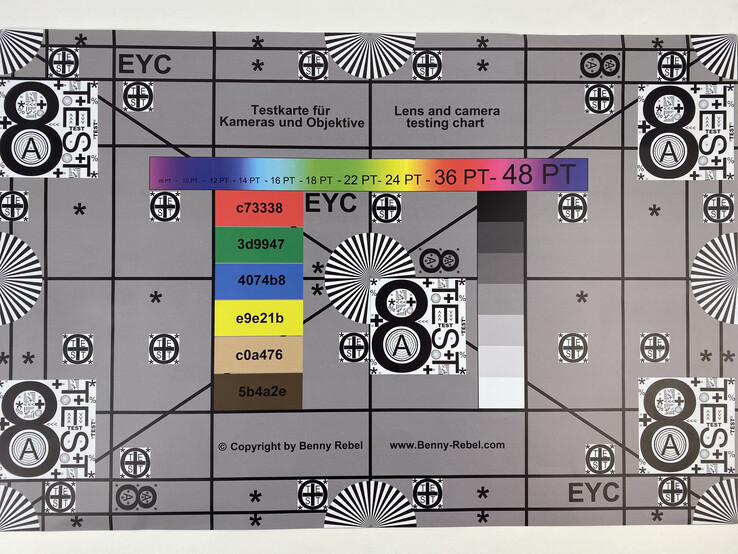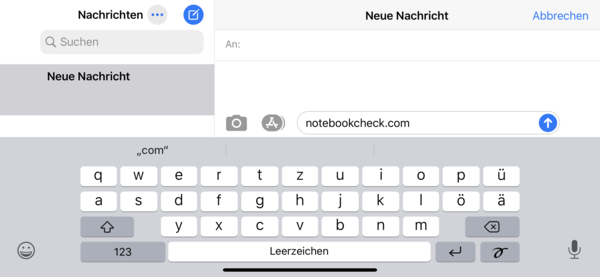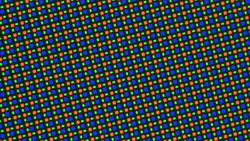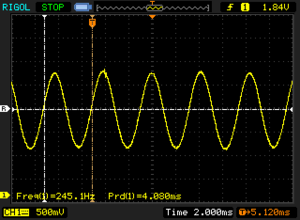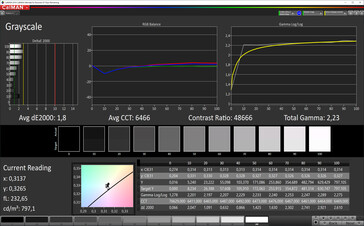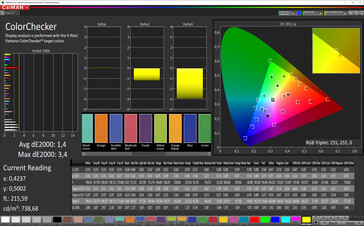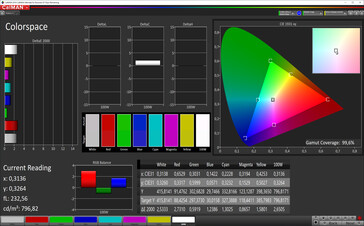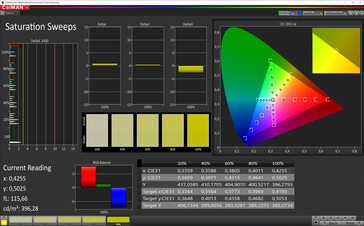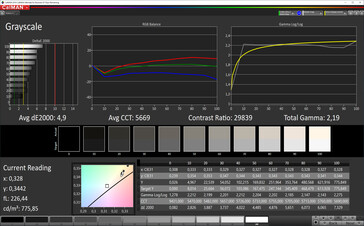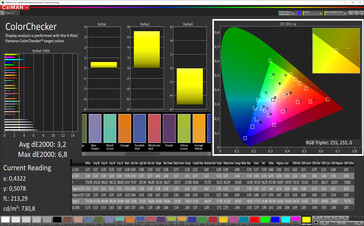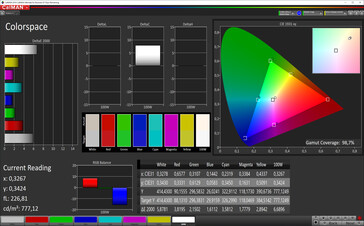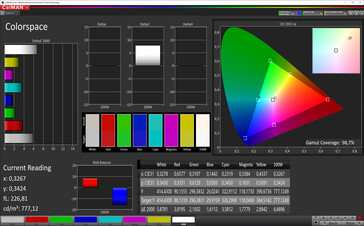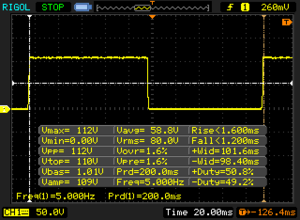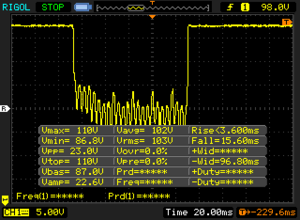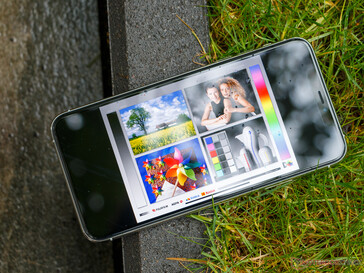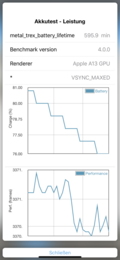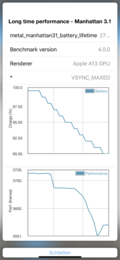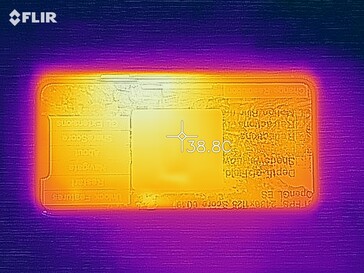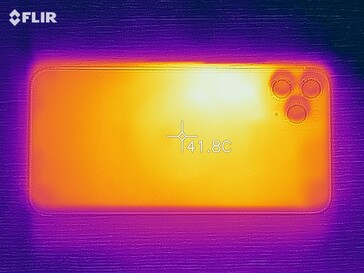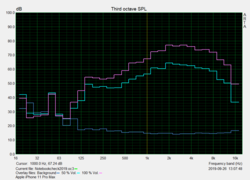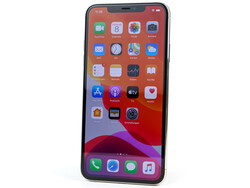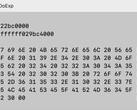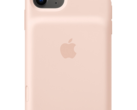Apple iPhone 11 Pro Max Smartphone Review: A leap forwards or more of the same?
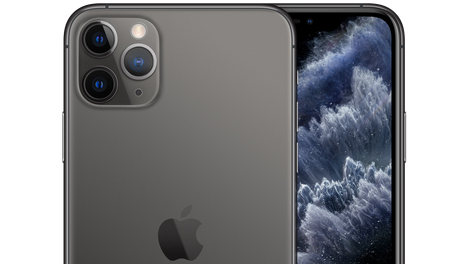
With the iPhone 11 Pro Max, there will once again be a large iPhone on the market this year. As an effective successor to last year's iPhone XS Max, the Pro Max has a 6.5-inch screen, many pixels, a handsome-sized battery and of course three rear-facing cameras. Apple has also brought the latter to the iPhone 11 Pro, but not the iPhone 11.
The idea of a big iPhone did not convince everyone last year, with its exorbitant pricing also drawing criticism. Apple has pitched the Pro Max at the pricing of its predecessor, which it has now withdrawn from sale. Sadly, Apple has continued with its year-on-year price rises, with the most expensive Pro Max costing US$1,449. The company still sells the iPhone 8 too though, which starts at US$449.
A pertinent question of all modern smartphone releases is how much it differs from its predecessor. So, is the Pro Max a slightly better iPhone XS Max? The new camera setup with its ultra-wide-angle lens and larger battery would suggest otherwise, but the brighter and more contrast-rich display, along with the A13 Bionic SoC would imply the Pro Max is an iterative update. The lack of 5G integration suggests so too.
It should go without saying that we will compare the Pro Max with the iPhone XS Max, but we also consider Apple's new most expensive flagship against the Samsung Galaxy Note 10+, along with the Galaxy S10+. Our comparison devices will also include the OnePlus 7 Pro and Huawei P30 Pro, two other smartphones to sport a "Pro" moniker, and the Sony Xperia 1 too. All our comparison devices, save for the OnePlus 7 Pro, cost close to or more than US$1,000.
- 10.10.2019: Live Review finished.
- 10.04.2019: Battery life result at idle added.
- 09.27.2019: Communication & GPS, Camera, Display and Battery Life sections expanded. Emissions & Power Consumption sections added.
- 09.24.2019: Wi-Fi and Display values added.
- 09.19.2019: Live review started.
Case - An iPhone with frosted glass
Looking at the iPhone XS Max, the Pro Max seems rather light on innovation. Apart from the new and rather eye-catching camera module and a new colour option, the design of the Pro Max remains close to that of the iPhone XS Max. It still consists of a metal frame and tempered glass on both sides. The Pro Max carries over the notch too, with Apple refraining from bringing imaginative solutions like punch-hole or pop-up cameras to its smartphones.
The dimensions also remain largely the same, with the Pro Max being a bulky and heavy smartphone. Our review unit weighs 226 g, making it noticeably heavier than its predecessor and almost 30 g more than the Galaxy Note 10+.
Apple calls the new colour option Midnight Green, which has a subtle finish befitting a "Pro" product. Midnight Green, as marketing images also show, is a mix between grey and light green. Apple has IP68-certified the Pro Max against the ingress of dust and liquids too, with the company also claiming that the device can withstand being submerged in up to four metres of water.
Connectivity - Neither 5G nor USB Type-C
4 GB of RAM makes a return, with Apple continuing to offer three storage options as it did last year. The Pro Max costs as follows:
- 4 GB of RAM and 64 GB of storage: US$1,099
- 4 GB of RAM and 256 GB of storage: US$1,249
- 4 GB of RAM and 512 GB of storage: US$1,449
A US$350 surcharge for 448 GB more storage seems steep, especially when no device supports microSD card expansion. You may also think that 4GB of RAM is meagre for a 2019 flagship, but iOS manages RAM usage better than Android does in our experience, so 4 GB remains enough for the time being.
Many mobile service providers now also support eSIMs, a feature that Apple has included in the Pro Max. The main advantage that eSIMs have over traditional SIMs is flexibility, with it possible to switch carriers without needing to switch your SIM for a new one. The Pro Max has a nano-SIM card slot too.
Apple continues to equip iPhones with its proprietary Lightning connector, despite it switching to USB Type-C for its latest iPad Pro series. You can, of course, connect traditional 3.5 mm headphones with an appropriate adapter or use the bundled Lightning headphones instead.
Software - Finally, an iOS with dark mode
New iPhone and a new version of iOS: That has been the tradition with Apple. The company remains true here too, releasing iOS 13 alongside its iPhone 11 series. The most notable change here is probably the new dark mode, which Apple has applied system-wide.
The photos app now curates moments from specific days or months and presents them as best-of too. Moreover, you can now edit videos, while Apple has also expanded upon the editing options and filters it includes. Apple includes the option to sign into apps and websites with your Apple account, and it even requires app providers that they offer this login method. iOS 13 brings map app enhancements too, with it able to show more detail than in iOS 12, and it can make fluid 360° walks through certain cities. Furthermore, Apple has included more memojis and a reminder app that intelligently prompts you to message a contact referred to in a reminder if you are using iMessage. CarPlay has been given a redesign too.
As always, iOS 13 should be even faster than its predecessor, particularly when using FaceID. We shall, of course, check this in the Input Devices & Operation section of this review.
Apple is bringing iOS 13 to a host of other devices too, so you need not buy an iPhone 11 to experience the changes it brings. iOS 13 should be rolled-out as far back as the iPhone 6S, which Apple released in 2015, although it will not support software features for which it lacks the hardware, like FaceID.
Communication & GPS - An iPhone with Wi-Fi 6
The Pro Max supports a host of LTE bands but only slightly expands upon those supported by its predecessor. Ultimately, the European version of the Pro Max should be better suited for intercontinental trips to China, Japan and the US, but that is about it. We would always recommend checking whether your device will work abroad before travelling, though. As with its predecessor, Apple has included a 4x4 MIMO antenna, which can send and receive four data streams simultaneously as its name suggests.
One new feature is Wi-Fi 6 support, which you may have seen referred to elsewhere as IEEE 802.11ax. You will need a corresponding Wi-Fi 6 router, of which there are currently few, but the Pro Max can theoretically achieve up to 11 Gb/s transfer speeds. Wi-Fi 6 brings other benefits too though, including reduced interference from neighbouring networks and new power-saving features. Apple has included 2x2 MIMO Wi-Fi antennas too.
Apple continues to limit the capabilities of NFC in its iPhones, but it has allowed more applications to utilise the hardware in iOS 13. As with its predecessor, the Pro Max supports Bluetooth 5.0, but aptX and aptX HD are still missing. Apple includes its in-house codecs for high-quality audio streaming, though.
Following on from Wi-Fi 6 is the new ultra-wideband chip, which Apple claims will give the Pro Max spatial awareness of sorts. Our review unit, for example, can sense nearby smartphones equipped with this chip and communicate with them. In practical terms, this simplifies AirDrop, with two iPhone 11s able to transfer files or information between each other seamlessly. More applications should integrate this functionality over time too.
The Pro Max uses Galileo, Glonass, GPS including A-GPS, and QZSS for location services. Apple continues to omit support for BeiDou, though.
We took our review unit on a bike ride to compare its location accuracy against a Garmin Edge 500, one of our reference bike computers. The Pro Max performed well overall, but it could not match the accuracy of the iPhone XS Max. The Garmin plotted a more stable route than the Pro Max too, but you should have no issues with using the smartphone for general navigation tasks.
Telephone Features & Call Quality
The Pro Max has decent call quality. Our review unit sounded good in both directions when using the earpiece, but we did notice a light echo when we switched to hands-free. Our call partner also complained, as they did with the iPhone 11 Pro, that our voice sounded rather tinny over loudspeaker. We could not move too far away from the Pro Max when calling over loudspeaker either; otherwise our voice would start to sound overly quiet.
The Pro Max supports voice over LTE (VoLTE) and Wi-Fi calling (VoWiFi) just like its iPhone 11 siblings. An eSIM makes a return too, which works perfectly but only with supporting carrier contracts.
Cameras - Triple rear-facing sensors and night mode
Another noticeable change with the Pro Max compared to its predecessor is with the rear-facing cameras, with Apple now including three of them. All are 12 MP sensors, but they have different focal lengths, so Apple has been able to combine them in the default camera app to offer continuous optical zoom: The Pro Max has a telephoto lens like its predecessor does too, allowing you to zoom further into scenes than the main rear-facing camera can. Apple has also included an ultra-wide-angle lens, which can give your photos a larger field of view than the other two sensors can.
The front facing-camera has received an upgrade too. Apple has switched out the 7 MP sensor in the iPhone XS Max for a 12 MP one, which can also record 4K videos at up to 60 FPS. However, the software has some problems with fine transitions between the background and foreground. Hair proved a problem for our review unit, in particular.
Our test pictures photographed using the main rear-facing camera look great, at least in our opinion. Fine details like the rabbit's coat look sharp, while the sensor reproduces the sky in a detailed fashion. The sensor does produce some slight artefacts compared to the sensors in many of our other comparison devices, though. The Pro Max generally exposes shots well too, and we only notice details falling victim to dynamic range when in HDR mode. The device cannot quite keep pace with the P30 Pro in low light, with our test shots looking a touch washed-out. The new night mode works well though and will likely be a frequently used feature in daily life. Annoyingly, the default camera app automatically activates the night mode, which we did not always find useful. Incidentally, the white balance is slightly too warm by default, but we are fans of Apple's approach. Ultimately, this is a matter of taste.
As we covered in our iPhone 11 Pro review, the Pro Max has excellent video capabilities. Apple has made a sterling effort at improving the default camera app compared to the one it included with the iPhone XS Max.
We also subjected the Pro Max to camera tests under controlled lighting conditions for a closer look at the accuracy of its colour reproduction. Our review unit performed well in our ColorChecker Passport test and even managed to reproduce colours in low light reasonably well. The latter is not always the case even with modern flagships, so the Pro Max does well here.
Likewise, there are generally no issues with how our review unit reproduced our test chart, although contrast levels drop off in the lower corners of the image. We have encountered this issue with most modern smartphones though, so the Pro Max is not alone in this regard. The main rear-facing camera reproduces text against coloured backgrounds without any noticeable artefacts too, but transitions between colours could have been cleaner.
We then photographed our test chart again but at 1 lux to see the difference that the new night mode makes in low-light shots. As the photos below demonstrate, night mode exposes low-light scenes better than the automatic mode can, while reducing image noise too. The night-mode shot has its issues, not least of which image noise, but it takes a nicer-looking photo overall than automatic mode does.
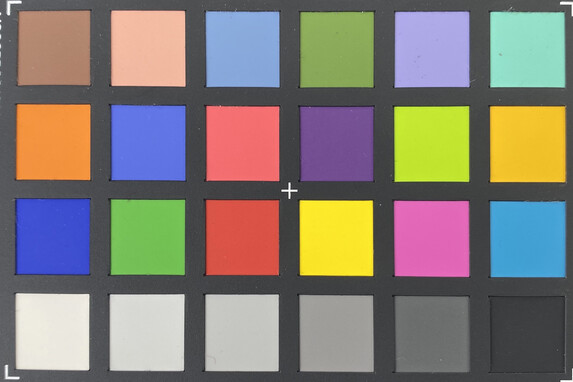
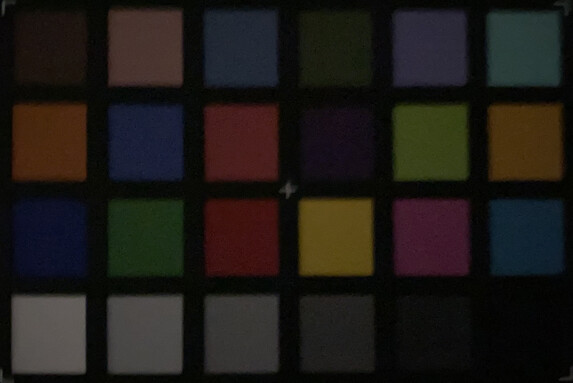
Accessories & Warranty - Pricier Apple Care
The Pro Max comes with a one-year limited manufacturer's warranty. However, you may receive up to two years' coverage if you live in the EU, for example. Please see our Guarantees, Return Policies & Warranties FAQ for country-specific information.
Apple continues to offer its AppleCare+ service too, which still costs 229 Euros (~$253) and covers two accidental damage repairs. Even with AppleCare+, Apple charges a 29-Euro (~$32) service fee for a display replacement and 99 Euros (~$109) to repair any other damage to the device. In theory, the latter should also cover a total loss of the device too. AppleCare+ is valid for two years from the date of purchase and can be purchased up to 60 days after purchase.
The Pro Max, like its predecessor, comes with a Lightning cable, a pair of Lightning headphones, a SIM tool, a quick-start guide and a set of stickers. However, there are two notable changes from the accessories that Apple included in last year's iPhone XS Max. Firstly, the Lightning cable no longer has Type-A at the other end but Type-C, which may surprise some people. Secondly, Apple has included an 18 W fast charger in the box, which is a big upgrade from the puny 5 W charger it bundled with previous iPhones.
Apple sells plenty of other accessories for the Pro Max too, including clear, leather or silicone cases, the latter of which comes in eight colours. You can also still buy AirPods and third-party wireless chargers.
Input Devices & Operation - Proven principles with minor improvements
Apple has done away with 3D Touch completely from its current iPhone line-up, probably much to the dismay of some people. However, Apple and other developers never made much use of it, so the company introduced Haptic Touch instead. Haptic Touch reacts to the length of time a part of the screen is pressed, rather than how hard as 3D Touch did. The Pro Max still emits a vibration when Haptic Touch is activated, as 3D Touch-enabled iPhones also did. We have encountered no issues when using Haptic Touch, so do not consider the omission of 3D Touch as a huge loss.
Touch ID, or a fingerprint scanner if you are used to Android smartphones, has not made a return, but Apple has promised to have improved the recognition speed of FaceID. These improvements are software-based, so the iPhone XS Max should receive them with iOS 13 too. We would be interested to know whether you can notice a speed improvement between iOS 12 and iOS 13, though.
The preinstalled in-house keyboard now supports swiping gestures, which is nothing new in itself. Third-party alternatives have had this feature for years, but it is good to see Apple finally include it in its keyboard too. The default keyboard converts swipes to words reliably too.
Display - A bright and colour-accurate OLED panel
The Pro Max, as we mentioned earlier, has a 6.5-inch display just like its predecessor. Its panel continues to resolve at 2688x1242 too, which puts it just short of being 4K. Apple continues to use OLED panels that support HDR but claims to have improved maximum brightness and contrast compared to the panel it included in the iPhone XS Max.
True Tone technology makes a return too, which adapts the white balance of the screen according to ambient light. In short, it should prevent your eyes from feeling strained after a prolonged period of staring at your iPhone.
Our review unit lives up to Apple's claim that it can reach 800 cd/m². However, it can only do so in one area, with the panel achieving an average maximum luminosity of 790 cd/m² with 97% evenness according to X-Rite i1Pro 2. While the display cannot quite reach 800 cd/m² across its entire panel, it is 17% brighter than the display in the iPhone XS Max.
The Pro Max can get between 9% and 26% brighter than our comparison devices too. The Pro Max also uses pulse-width modulation (PWM) to regulate its brightness, as many OLED-equipped devices do. The display in our review unit flickers at between 235.8 and 245.1 Hz, which drops to 60 Hz at maximum luminosity. You can also set this by enabling manual brightness.
| |||||||||||||||||||||||||
Brightness Distribution: 97 %
Center on Battery: 790 cd/m²
Contrast: ∞:1 (Black: 0 cd/m²)
ΔE ColorChecker Calman: 1.4 | ∀{0.5-29.43 Ø4.77}
ΔE Greyscale Calman: 1.9 | ∀{0.09-98 Ø5}
99.6% sRGB (Calman 2D)
Gamma: 2.23
CCT: 6466 K
| Apple iPhone 11 Pro Max OLED, 2688x1242, 6.5" | Apple iPhone Xs Max OLED, 2688x1242, 6.5" | Samsung Galaxy S10 Plus OLED, 3040x1440, 6.4" | Samsung Galaxy Note10+ Dynamic AMOLED, 3040x1440, 6.8" | OnePlus 7 Pro AMOLED, 3120x1440, 6.7" | Huawei P30 Pro OLED, 2340x1080, 6.5" | Sony Xperia 1 OLED, 3840x1644, 6.5" | |
|---|---|---|---|---|---|---|---|
| Screen | -6% | -61% | -32% | -2% | -17% | 12% | |
| Brightness middle (cd/m²) | 790 | 656 -17% | 710 -10% | 683 -14% | 586 -26% | 597 -24% | 541 -32% |
| Brightness (cd/m²) | 790 | 659 -17% | 721 -9% | 694 -12% | 584 -26% | 608 -23% | 543 -31% |
| Brightness Distribution (%) | 97 | 88 -9% | 97 0% | 96 -1% | 97 0% | 89 -8% | 99 2% |
| Black Level * (cd/m²) | |||||||
| Colorchecker dE 2000 * | 1.4 | 1.7 -21% | 3.7 -164% | 2.9 -107% | 1.39 1% | 2.2 -57% | 0.8 43% |
| Colorchecker dE 2000 max. * | 3.4 | 2.8 18% | 10.3 -203% | 4.8 -41% | 2.7 21% | 3.6 -6% | 1.7 50% |
| Greyscale dE 2000 * | 1.9 | 1.7 11% | 1.5 21% | 2.2 -16% | 1.6 16% | 1.6 16% | 1.2 37% |
| Gamma | 2.23 99% | 1.998 110% | 2.1 105% | 2.11 104% | 2.243 98% | 2.23 99% | 2.2 100% |
| CCT | 6466 101% | 6487 100% | 6611 98% | 6247 104% | 6672 97% | 6268 104% | 6601 98% |
* ... smaller is better
Screen Flickering / PWM (Pulse-Width Modulation)
| Screen flickering / PWM detected | 245.1 Hz | ≤ 99 % brightness setting | |
The display backlight flickers at 245.1 Hz (worst case, e.g., utilizing PWM) Flickering detected at a brightness setting of 99 % and below. There should be no flickering or PWM above this brightness setting. The frequency of 245.1 Hz is relatively low, so sensitive users will likely notice flickering and experience eyestrain at the stated brightness setting and below. In comparison: 53 % of all tested devices do not use PWM to dim the display. If PWM was detected, an average of 8091 (minimum: 5 - maximum: 343500) Hz was measured. | |||
The Pro Max has a theoretically infinite contrast ratio and absolute blacks, as its OLED panel can switch off pixels individually. This should result in richer-looking colours and deeper blacks than an LCD panel could produce.
We also subjected the Pro Max to further display tests with CalMAN software and our spectrophotometer. Our review unit has small colour deviations from the reference sRGB colour space, but we must deactivate True Tone to achieve this. The Pro Max matches the iPhone XS Max in this regard and covers almost all the sRGB colour space. Please keep in mind that CalMAN only gives indicative results in this regard.
The display also has comparatively short response times. Hence, the Pro Max should be good enough for gamers and even professional filmmakers.
Display Response Times
| ↔ Response Time Black to White | ||
|---|---|---|
| 2.8 ms ... rise ↗ and fall ↘ combined | ↗ 1.6 ms rise | |
| ↘ 1.2 ms fall | ||
| The screen shows very fast response rates in our tests and should be very well suited for fast-paced gaming. In comparison, all tested devices range from 0.1 (minimum) to 240 (maximum) ms. » 12 % of all devices are better. This means that the measured response time is better than the average of all tested devices (20.2 ms). | ||
| ↔ Response Time 50% Grey to 80% Grey | ||
| 7 ms ... rise ↗ and fall ↘ combined | ↗ 3.6 ms rise | |
| ↘ 3.4 ms fall | ||
| The screen shows very fast response rates in our tests and should be very well suited for fast-paced gaming. In comparison, all tested devices range from 0.165 (minimum) to 636 (maximum) ms. » 19 % of all devices are better. This means that the measured response time is better than the average of all tested devices (31.6 ms). | ||
We had hardly any issues with using the Pro Max outdoors. Its exceptionally bright display makes it easy to use the device even on sunny days, although the time of year when we tested it meant that we could not check whether it dimmed its luminosity when the SoC got hot. Its predecessors did so, so we would not rule out the Pro Max doing the same. If that does occur, then moving to a shadier spot should resolve any issues.
The Pro Max has just as stable viewing angles as any other OLED smartphone does. We did not notice a colourful film occurring at acute viewing angles as we used to with LCD panels, nor are there any colour inversions. The display does look a touch cool at oblique angles, but this should not hinder readability.
Performance - A strong performer
Apple has equipped the Pro Max with an A13 Bionic SoC, which the company claims is 20% more powerful than the A12 Bionic, which it also stated was around 15% more powerful than the A11 Bionic. The real-world difference between the A13 Bionic and its predecessor will probably be negligible, and the absence of any manufacturing processes suggests that the SoC will not be much more efficient either. Apple is focusing heavily on machine learning, which it also claims it has improved with the A13 Bionic.
The Pro Max performed well in synthetic benchmarks, at least those that it would run without crashing. 3DMark, for instance, would stop working for some reason. However, the ones that worked demonstrated that the A13 Bionic scored between 22 and 42% better than its predecessor. Similarly, the A13 Bionic GPU is up to 60% faster than the A12 Bionic GPU depending on the benchmark. Our review unit even doubled the performance of the iPhone XS Max in some GFXBench benchmarks.
We have no complaints with system performance too. iOS 13 runs quickly and without any stutters, so with the power of A13 Bionic we expect the Pro Max to be future-proofed for several years.
The Pro Max has no issues with web-browsing, either. Our review unit performed well in daily use and in synthetic benchmarks too.
| Jetstream 2 - 2.0 Total Score | |
| Average of class Smartphone (23.8 - 387, n=148, last 2 years) | |
| Average Apple A13 Bionic (128.5 - 142.2, n=5) | |
| Apple iPhone 11 Pro Max (Safari Mobile 13.1) | |
| OnePlus 7 Pro (Chrome 74) | |
| Huawei P30 Pro (Chrome 73) | |
| Sony Xperia 1 (Chrome 75) | |
| Samsung Galaxy S10 Plus (Samung Browser 9.0) | |
| Samsung Galaxy Note10+ (Samung Browser 9.2) | |
| JetStream 1.1 - Total Score | |
| Apple iPhone 11 Pro Max (Safari Mobile 13.1) | |
| Average Apple A13 Bionic (279 - 302, n=5) | |
| Apple iPhone Xs Max (Safari 12) | |
| Sony Xperia 1 | |
| Samsung Galaxy S10 Plus (Samsung Browser 9.0) | |
| Samsung Galaxy Note10+ (Samsung Browser 9.2) | |
| Speedometer 2.0 - Result 2.0 | |
| Average of class Smartphone (15.2 - 643, n=121, last 2 years) | |
| Average Apple A13 Bionic (153 - 171, n=5) | |
| Apple iPhone 11 Pro Max (Safari Mobile 13.1) | |
| Huawei P30 Pro (Chrome 73) | |
| Sony Xperia 1 (Chrome 75) | |
| OnePlus 7 Pro (Chome 74) | |
| Samsung Galaxy S10 Plus (Samsung Browser 9.0) | |
| Samsung Galaxy Note10+ (Samsung Browser 9.2) | |
| WebXPRT 3 - Overall | |
| Apple iPhone 11 Pro Max (Safari Mobile 13.1) | |
| Average Apple A13 Bionic (146 - 202, n=5) | |
| Average of class Smartphone (38 - 380, n=31, last 2 years) | |
| Apple iPhone Xs Max (Safari 12) | |
| Huawei P30 Pro (Chrome 73) | |
| Samsung Galaxy Note10+ (Samsung Browser 9.2) | |
| Samsung Galaxy S10 Plus (Samsung Browser 9.0) | |
| OnePlus 7 Pro (Chrome 74) | |
| Sony Xperia 1 (Chrome 75) | |
| Octane V2 - Total Score | |
| Average of class Smartphone (2228 - 121337, n=195, last 2 years) | |
| Apple iPhone 11 Pro Max (Safari Mobile 13.1) | |
| Average Apple A13 Bionic (47288 - 49388, n=5) | |
| Apple iPhone Xs Max (Safari 12) | |
| OnePlus 7 Pro (Chrome 74) | |
| Sony Xperia 1 (Chrome 75) | |
| Huawei P30 Pro (Chrome 73) | |
| Samsung Galaxy S10 Plus (Samsung Browser 9.0) | |
| Samsung Galaxy Note10+ (Samsung Browser 9.2) | |
| Mozilla Kraken 1.1 - Total | |
| Samsung Galaxy Note10+ (Samsung Browser 9.2) | |
| Sony Xperia 1 (Chrome 75) | |
| Huawei P30 Pro (Chrome 73) | |
| OnePlus 7 Pro (Chrome 74) | |
| Samsung Galaxy S10 Plus (Samsung Browser 9.0) | |
| Average of class Smartphone (257 - 28190, n=154, last 2 years) | |
| Apple iPhone Xs Max (Safari 12) | |
| Apple iPhone 11 Pro Max (Safari Mobile 13.1) | |
| Average Apple A13 Bionic (545 - 573, n=5) | |
* ... smaller is better
Games - A powerful gaming phone with a few quirks
The Pro Max has everything it takes to be a great gaming smartphone. A strong battery, stereo speakers, a large display and plenty of performance all combine to create an excellent gaming experience. GameBench underlines this, with our review unit able to maintain stable frame rates at high graphics levels. Small graphics errors still occurred in PUBG Mobile though, as proved the case during our iPhone 11 Pro tests. These only occur when our character is near water, for reference.
The large display and stereo speakers deliver an engrossing gaming experience. However, we often found our hands obscuring at least one speaker during our tests.
PUBG Mobile
Dead Trigger 2
Emissions - hot and occasional thermal throttling
Temperature
Our review unit runs rather hot even when idling, with surface temperatures peaking around 35 °C on some areas of the device. The entire device exceeds 35 °C under sustained load too, with several areas breaching the 40 °C mark. However, the device should never feel too hot to hold even during prolonged gaming sessions.
We also ran GFXBench battery tests to see whether Pro Max throttles under sustained load. Our review unit maintained peak performance during the older T-Rex benchmark, but frame rates had dropped by a few percent by the end of the more complex Manhattan benchmark. The Pro Max performs much better than its predecessor in this regard though, with the iPhone XS Max throttling by 22% by the end of our Manhattan benchmark loop.
(±) The maximum temperature on the upper side is 40.1 °C / 104 F, compared to the average of 35.2 °C / 95 F, ranging from 21.9 to 247 °C for the class Smartphone.
(±) The bottom heats up to a maximum of 42.3 °C / 108 F, compared to the average of 34 °C / 93 F
(±) In idle usage, the average temperature for the upper side is 33.6 °C / 92 F, compared to the device average of 32.9 °C / 91 F.
Speakers
The Pro Max has stereo speakers like the iPhones that came before it, but Apple has equipped the device with louder drivers than the ones it used in the iPhone XS Max. The Pro Max comes with specialist ARTA software and has a directional microphone too that theoretically should improve sound reproduction. The sound that they produce still lacks depth, though.
The Pro Max also has Dolby Atmos and spatial audio onboard, but these are for use with headphones or external speakers. You can simultaneously pair two pairs of AirPods or wireless Beats headphones to the Pro Max too. Even if our pink noise tests do not certify that the speakers are linear, audio sounds good to our ears at medium volumes. However, the speakers distort audibly at maximum volumes, which does not sound great when playing music.
Sadly, the Pro Max does not support high-quality Bluetooth audio codecs. Worse still, you must buy a Lightning to 3.5 mm adapter should you wish to use conventional high-end headphones.
Apple iPhone 11 Pro Max audio analysis
(+) | speakers can play relatively loud (85.8 dB)
Bass 100 - 315 Hz
(-) | nearly no bass - on average 15.4% lower than median
(±) | linearity of bass is average (10.3% delta to prev. frequency)
Mids 400 - 2000 Hz
(±) | higher mids - on average 5.7% higher than median
(+) | mids are linear (5.9% delta to prev. frequency)
Highs 2 - 16 kHz
(±) | higher highs - on average 8.8% higher than median
(+) | highs are linear (3.5% delta to prev. frequency)
Overall 100 - 16.000 Hz
(±) | linearity of overall sound is average (19.4% difference to median)
Compared to same class
» 27% of all tested devices in this class were better, 8% similar, 65% worse
» The best had a delta of 11%, average was 35%, worst was 134%
Compared to all devices tested
» 47% of all tested devices were better, 7% similar, 46% worse
» The best had a delta of 4%, average was 24%, worst was 134%
Apple iPhone Xs Max audio analysis
(±) | speaker loudness is average but good (77.2 dB)
Bass 100 - 315 Hz
(-) | nearly no bass - on average 57.1% lower than median
(+) | bass is linear (0% delta to prev. frequency)
Mids 400 - 2000 Hz
(-) | nearly no mids - on average 57.1% lower than median
(+) | mids are linear (0% delta to prev. frequency)
Highs 2 - 16 kHz
(-) | nearly no highs - on average 57.1% lower than median
(+) | highs are linear (0% delta to prev. frequency)
Overall 100 - 16.000 Hz
(-) | overall sound is not linear (121.9% difference to median)
Compared to same class
» 91% of all tested devices in this class were better, 7% similar, 2% worse
» The best had a delta of 11%, average was 35%, worst was 134%
Compared to all devices tested
» 97% of all tested devices were better, 2% similar, 1% worse
» The best had a delta of 4%, average was 24%, worst was 134%
Power Management
Power Consumption
The Pro Max is comparatively economic under sustained load, with our review unit peaking at 6.18 W during our tests. The device averaged 3.65 W under load too, which is lower than all our comparison devices. However, it also has comparatively high power consumption when idling, which allows the Galaxy S10+, Galaxy Note 10+ and OnePlus 7 Pro to average lower values overall. The Pro Max consumes much more than its predecessor when idling too.
The Pro Max idles with a higher draw at maximum luminosity, but only because it can reach peak brightness manually, unlike its predecessor. The Pro Max can hit 800 cm/m² manually, while the iPhone XS Max could only reach 370 cd/m², for reference.
| Off / Standby | |
| Idle | |
| Load |
|
Key:
min: | |
| Apple iPhone 11 Pro Max 3969 mAh | Apple iPhone Xs Max 3174 mAh | Samsung Galaxy S10 Plus 4100 mAh | Samsung Galaxy Note10+ 4300 mAh | OnePlus 7 Pro 4000 mAh | Huawei P30 Pro 4200 mAh | Sony Xperia 1 3330 mAh | Average Apple A13 Bionic | Average of class Smartphone | |
|---|---|---|---|---|---|---|---|---|---|
| Power Consumption | 10% | -3% | -12% | -9% | 6% | 9% | -10% | -14% | |
| Idle Minimum * (Watt) | 0.92 | 1 -9% | 0.73 21% | 0.7 24% | 0.9 2% | 0.68 26% | 1 -9% | 0.76 ? 17% | 0.845 ? 8% |
| Idle Average * (Watt) | 2.9 | 1.4 52% | 1.53 47% | 1.81 38% | 1.8 38% | 2.6 10% | 1.48 49% | 3.39 ? -17% | 1.44 ? 50% |
| Idle Maximum * (Watt) | 2.94 | 1.7 42% | 2.07 30% | 1.92 35% | 2.9 1% | 2.77 6% | 1.56 47% | 3.44 ? -17% | 1.625 ? 45% |
| Load Average * (Watt) | 3.65 | 4.6 -26% | 6.03 -65% | 7.57 -107% | 5.5 -51% | 3.74 -2% | 3.76 -3% | 4.66 ? -28% | 7.01 ? -92% |
| Load Maximum * (Watt) | 6.18 | 6.7 -8% | 9.18 -49% | 9.34 -51% | 8.2 -33% | 6.82 -10% | 8.48 -37% | 6.42 ? -4% | 11.3 ? -83% |
* ... smaller is better
Battery Life
The Pro Max comes with a 3,969 mAh battery, which is much larger than the one that was included in the iPhone XS Max. Apple claims that the former will last around five hours longer than the latter between charges, but our practical Wi-Fi battery test demonstrates otherwise. Our review unit lasted a class-leading 15:09 hours in this test, but that is under three hours longer than what the iPhone XS Max achieved in the same test.
Overall, only the P30 Pro comes close to matching the runtimes that the Pro Max achieved in our tests, despite the former having a 231-mAh larger battery than the latter. By contrast, our other comparison devices average between 30% and 50% shorter runtimes than our review unit, even though all but the iPhone XS Max and Xperia 1 have at least 4,000 mAh batteries. In short, the Pro Max has excellent battery life and should easily last over a day's use between charges.
It is good to see that Apple has bundled a fast charger in the box too. Likewise, the Pro Max supports the Qi wireless-charging standard, which is handy.
| Apple iPhone 11 Pro Max 3969 mAh | Apple iPhone Xs Max 3174 mAh | Samsung Galaxy S10 Plus 4100 mAh | Samsung Galaxy Note10+ 4300 mAh | OnePlus 7 Pro 4000 mAh | Huawei P30 Pro 4200 mAh | Sony Xperia 1 3330 mAh | |
|---|---|---|---|---|---|---|---|
| Battery runtime | -39% | -43% | -34% | -33% | -15% | -49% | |
| Reader / Idle (h) | 43.6 | 21.8 -50% | 26 -40% | 26.4 -39% | 29.1 -33% | 32.8 -25% | 17.8 -59% |
| H.264 (h) | 22.4 | 13.4 -40% | 15.4 -31% | 15.6 -30% | 13.4 -40% | 19.9 -11% | 11.9 -47% |
| WiFi v1.3 (h) | 15.2 | 12.4 -18% | 8.1 -47% | 8.9 -41% | 12.8 -16% | 14 -8% | 7.4 -51% |
| Load (h) | 6.8 | 3.7 -46% | 3.1 -54% | 5.1 -25% | 3.9 -43% | 5.7 -16% | 4.1 -40% |
Pros
Cons
Verdict - The battery makes the difference
The release of the iPhone 11 Pro Max coincides with the withdrawal of the iPhone XS Max, which may be a smart move by Apple. There are differences between the two models, but they are not great enough to justify selling both devices alongside each other. The Pro Max does include more power, an additional camera lens, a higher megapixel front-facing camera and support for Wi-Fi 6 among other innovations than its predecessor, though. The device has faster Face ID unlocking too, although this will arrive on the XS Max courtesy of iOS 13. A big difference with the iPhone 11 Pro Max compared to its predecessor is its 25% larger battery which, coupled with reduced power consumption under load, results in significantly better longer runtimes.
Overall, the Pro Max does not shine because of its new features but because of the combined effect of many minor improvements over its predecessor. Many of these have been around for a while in the Android cosmos, but Apple has implemented these features well within their ecosystem. The new triple rear-facing cameras are a noticeable improvement over the ones in the XS Max, especially in low-light. The new night mode helps distinguish the Pro Max from its predecessor too. While Apple's new most-expensive flagship may not have the best cameras on the market, its video capabilities cannot be faulted.
The iPhone 11 Pro Max offers extremely long battery life, good cameras and performance in abundance.
However, Apple could have done more with the audio capabilities of the Pro Max. Its stereo speakers are good but not great, while the lack of even a Lightning to 3.5 mm jack adapter in the box stings. Likewise, the omission of high-quality Bluetooth audio codecs should effectively rule out the device for audiophiles.
You should play with the iPhone 11 Pro Max before buying it in our opinion, as it is a bulky and heavy device, which will not suit everyone. In short, the Pro Max is not a worthwhile upgrade from the XS Max, with most of the improvements that the latter has being iOS 13-based, rather than because of any substantial hardware changes. Externally, it is difficult to tell the two apart unless you buy the Midnight Green version, but the Pro Max represents a big upgrade for those who own an older iPhone. Its A13 Bionic SoC, triple cameras, large battery and wireless-charging support are all significant improvements over older iPhones, as is its bright, contrast-rich and HDR display.
Please note: The Apple iPhone 11 Pro Max is one of the first smartphones that we have scored using our new v7 rating system. We have restructured some criteria and altered some limits to ensure that future devices cannot score beyond 100 in some areas. As a result, our new v7 reviews are averaging lower percentages than devices we reviewed using our v6 rating system. We will be re-assessing previous flagships with this new methodology in the coming weeks.
Apple iPhone 11 Pro Max
- 08/31/2022 v7 (old)
Florian Schmitt




